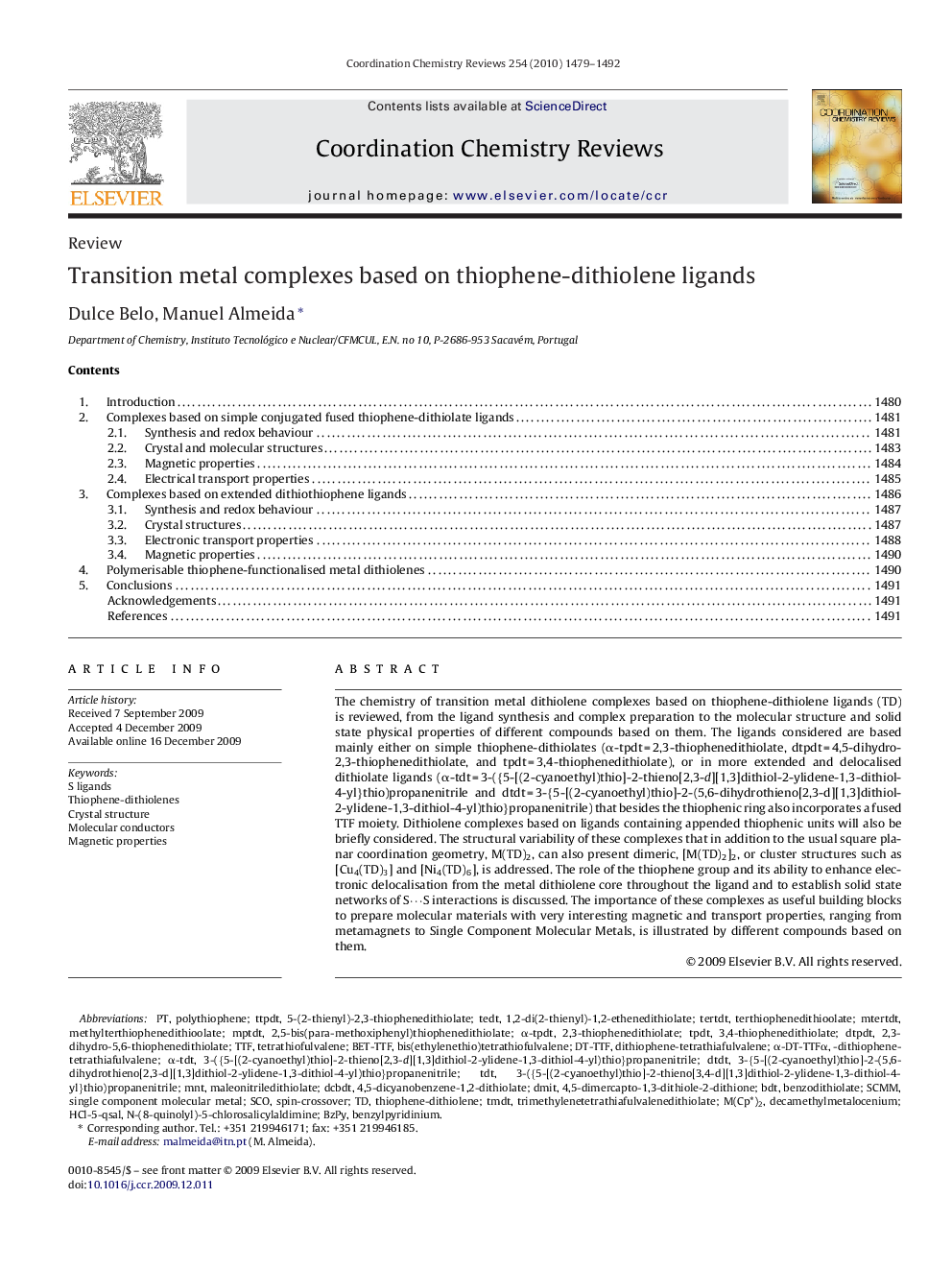| کد مقاله | کد نشریه | سال انتشار | مقاله انگلیسی | نسخه تمام متن |
|---|---|---|---|---|
| 1299289 | 1498793 | 2010 | 14 صفحه PDF | دانلود رایگان |

The chemistry of transition metal dithiolene complexes based on thiophene-dithiolene ligands (TD) is reviewed, from the ligand synthesis and complex preparation to the molecular structure and solid state physical properties of different compounds based on them. The ligands considered are based mainly either on simple thiophene-dithiolates (α-tpdt = 2,3-thiophenedithiolate, dtpdt = 4,5-dihydro-2,3-thiophenedithiolate, and tpdt = 3,4-thiophenedithiolate), or in more extended and delocalised dithiolate ligands (α-tdt = 3-({5-[(2-cyanoethyl)thio]-2-thieno[2,3-d][1,3]dithiol-2-ylidene-1,3-dithiol-4-yl}thio)propanenitrile and dtdt = 3-{5-[(2-cyanoethyl)thio]-2-(5,6-dihydrothieno[2,3-d][1,3]dithiol-2-ylidene-1,3-dithiol-4-yl)thio}propanenitrile) that besides the thiophenic ring also incorporates a fused TTF moiety. Dithiolene complexes based on ligands containing appended thiophenic units will also be briefly considered. The structural variability of these complexes that in addition to the usual square planar coordination geometry, M(TD)2, can also present dimeric, [M(TD)2]2, or cluster structures such as [Cu4(TD)3] and [Ni4(TD)6], is addressed. The role of the thiophene group and its ability to enhance electronic delocalisation from the metal dithiolene core throughout the ligand and to establish solid state networks of S⋯S interactions is discussed. The importance of these complexes as useful building blocks to prepare molecular materials with very interesting magnetic and transport properties, ranging from metamagnets to Single Component Molecular Metals, is illustrated by different compounds based on them.
Journal: Coordination Chemistry Reviews - Volume 254, Issues 13–14, July 2010, Pages 1479–1492